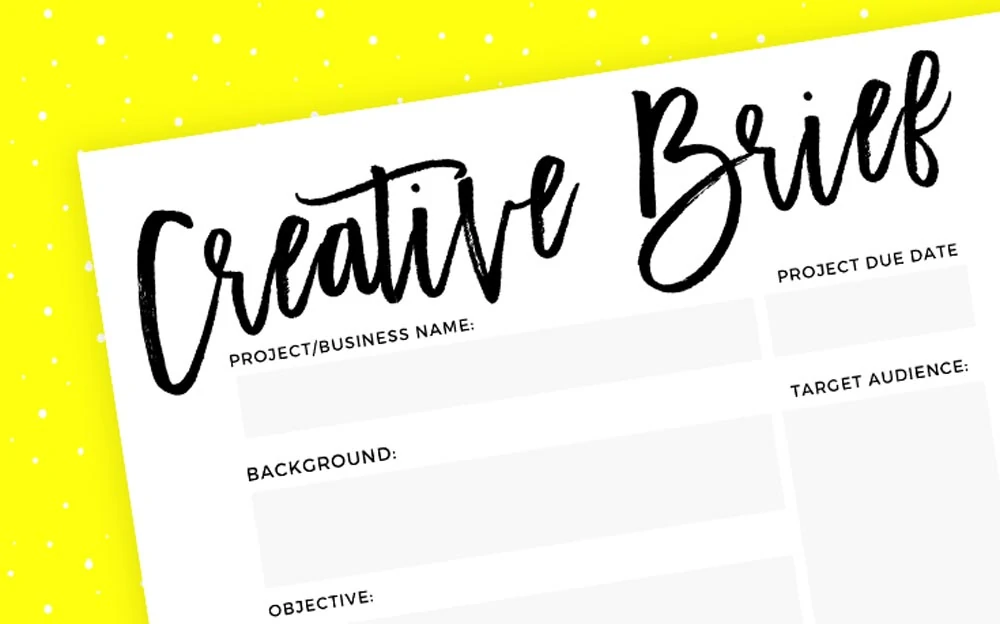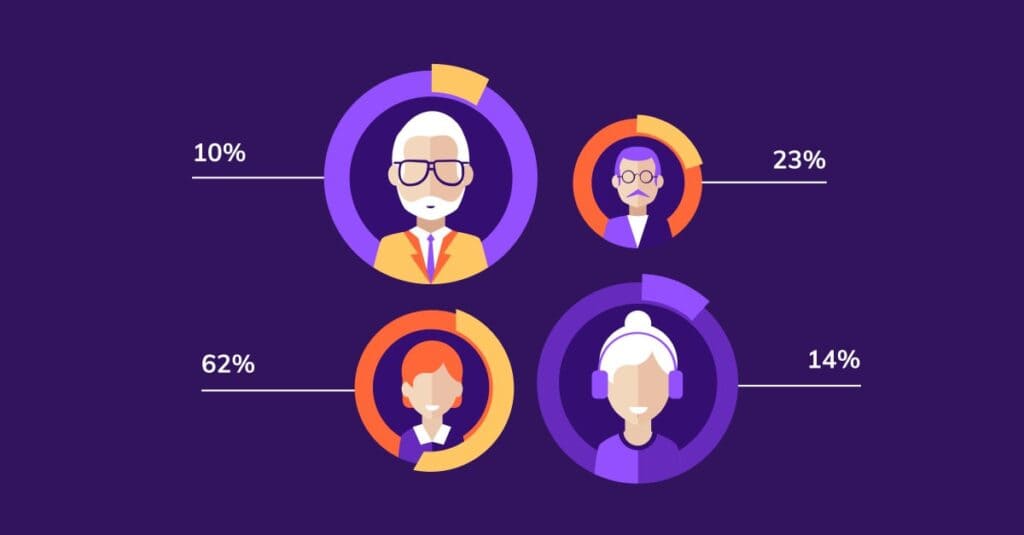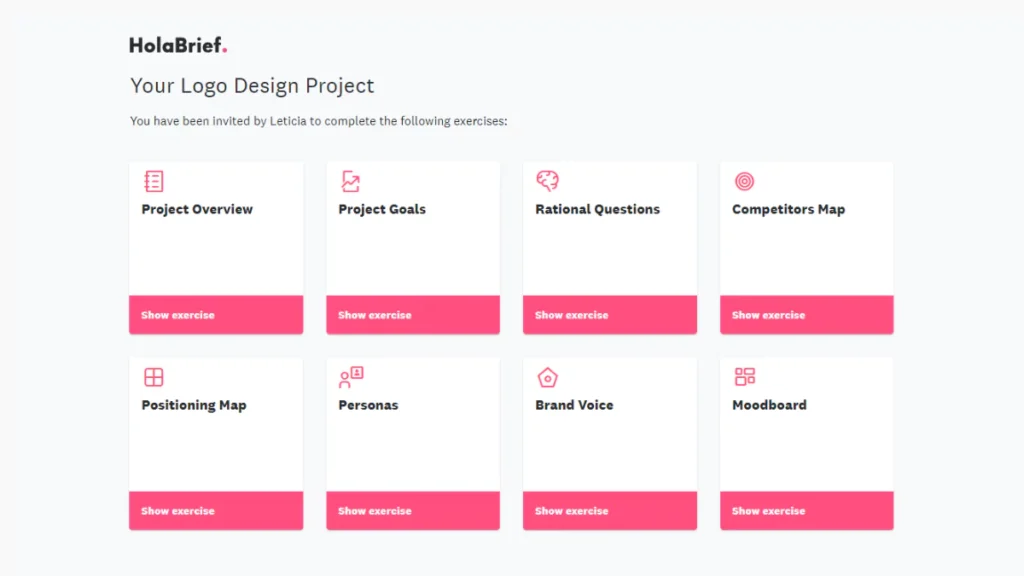Logo Design Brief: A Guide to Creating an Impactful Visual Identity
A logo is often the first impression your company makes on potential customers. It's an iconic representation of your brand and conveys what you stand for in a simple, memorable way.
However, creating an effective logo requires thought and planning. You can't just throw some ideas together and hope it works. Following a comprehensive logo design brief will set your logo redesign or new design on the right path.
This guide covers everything you need in your logo design brief, including:
- Defining your target audience and brand positioning
- Communicating your brand personality and style
- Providing design examples and inspiration
- Outlining technical and functional requirements
- Explaining where and how the logo will be used
- Setting clear expectations and goals
With a detailed design brief, you enable designers to create options tailored to your brand. You'll get a logo that builds brand recognition and reflects your company's identity.
Table of Contents
Why a Logo Design Brief Matters

You might be tempted to skip the brief and jump to the visual design phase. But taking the time to clarify your needs and preferences upfront will pay off tremendously.
Here are some key reasons the logo design brief is invaluable:
It Aligns You With the Designer
The brief ensures that you and the designer are on the same page regarding your brand identity, target audience, design aesthetics, and project goals. This alignment means less back-and-forth and revisions down the road.
It Focuses on the Creative Process
A thoughtful brief gives the designer direction and guardrails to explore concepts within your brand's parameters. The defined scope saves time and prevents tangents.
It Produces Relevant Concepts
With a solid brief, the designer can hone in on logo ideas tailored to your unique brand values and audience. The concepts will feel cohesive and meaningful right from the start.
It Creates a Framework for Feedback
When providing feedback on logo options, refer to the elements outlined in your brief. This gives the designer context for what's working, missing the mark, and why.
It Serves as a Reference For Future Work
Even after the logo is complete, the brief remains a helpful guide for the designer or other creative partners you hire for websites, packaging, ads, and visual touchpoints.
In short, A thoughtful logo design brief is the blueprint for crafting a visual identity that embodies your brand and resonates with your audience. Take advantage of this step!
Defining Your Target Audience

The first section of your logo design brief focuses on your target audience. Your logo should resonate with the customers you want to attract.
Provide an overview of who your ideal customers are, including:
- Demographic information – age, income, location, gender, education level, etc. What life stages and life experiences shape their needs and perspectives?
- Psychographic profile – attitudes, values, interests, and lifestyles. What motivates their purchase decisions?
- Behavioural data – where and when they make purchases, how much they spend, brands they're loyal to, how price sensitive they are.
- Pain points and needs – their problems and how your brand can solve them. What outcomes are they looking for?
The more detailed your target audience profile, the better designers can craft a logo to appeal to them. Share any customer research or personas you have available.
Positioning Your Brand
With your target audience defined, outline your brand positioning to focus the logo design process further.
Your brand positioning sets you apart from competitors and gives customers a reason to choose you. It communicates what makes you unique.
Elements to include:
- Mission statement – One sentence explaining your brand's reason for existing. Gets at your underlying motivations and aspirations.
- Brand promise – The key benefits customers can expect from your brand. Frame as a statement of what you provide.
- Brand values and personality – More on this in the next section. Highlight 2-5 adjectives describing your brand's values and personality.
- Competitor analysis – How you differ from competitors in your space. What space do you occupy that competitors don't?
With this framework, designers understand your brand identity and how to represent it visually through your logo.
Communicating Your Brand Personality and Style

Now, we get more in-depth on your brand personality and visual style preferences to further guide the logo design process.
Brand Personality
Your brand personality shapes the emotional response you want people to have to your logo. Is your brand:
- Playful? Serious? Cutting-edge? Traditional?
- Friendly? Leaderly? Affordable? Luxurious?
- Simple? Complex? Minimalist? Bold?
Choose 2-5 personality traits you want your logo to project. Explain why they fit your brand and how you want customers to perceive you.
Also, describe the overall tone and feeling you want the logo to evoke – cleverness, trust, stability, energy, calm, happiness, etc.
Visual Style
Beyond personality, provide examples of visual styles that appeal to you:
- Colour palette – the colours that represent your brand identity. Provide hex codes if possible.
- Typography – font styles (serif, sans-serif, script, display, handwritten) you like and specific fonts if you have them.
- Graphic styles – abstract, minimalist, geometric, organic, hand-drawn, high-tech, retro, etc.
- Imagery – nature scenes, people, urban environments, objects, shapes, textures, etc.
- Favourite brand logos – 2-3 logo designs you admire from other companies and why
Giving designers a sense of your visual taste makes it easier to craft options you'll be happy with. Include any specific elements you want to see incorporated – symbols, shapes, letters, illustrations, etc.
Providing Design Examples and Inspiration

To further communicate the look and feel you're going for, provide 3-5 logo design examples that inspire you from within or outside your industry.
Explain what precisely you like about each logo sample – colours, font, symmetry, simplicity, cleverness, etc. Call out any elements you'd like your logo to emulate.
Some helpful sources for logo inspiration include:
- Logo books like Logo Modernism
- Design inspiration sites like Dribbble and Behance
- “Best logos” lists online
- Pinterest boards on logo design
Try to choose recent logo designs, as they'll be more on-trend. If you want something classic, include that context.
Giving designers samples to work from makes the ideation process smoother and ensures alignment.
Outlining Technical and Functional Requirements

Now, we get into the technical considerations for your logo design. While less exciting, these specifications are critical for an effective logo.
File Format
Detail which file formats you'll need the final logo delivered for different applications. This often includes:
- Vector file (EPS, AI, PDF) – for printing, merchandise, signage
- Transparent PNG – for digital use on websites and apps
- JPG or PNG – for presentations, office documents
- Favicon – simplified icon for browser tabs
- High resolution – for banners, trade show materials
Providing these specifications upfront allows the designer to create logo files optimised for your needs.
Colour Format
- CMYK – For print materials. Combines cyan, magenta, yellow and black ink
- RGB – For digital and web. Mixes red, green and blue light
- Pantone – For solid colour accuracy across print materials
Specify if you need the logo in CMYK, RGB or specific Pantone colours. CMYK is suitable for dark logos, while light symbols shine in RGB.
Sizing
Consider minimum size requirements for print and digital use. The logo should remain clear and legible at small web icon sizes.
Provide real-world contexts where sizing matters – product packaging, online ads, mobile screens, merchandise, etc.
Future Iterations and Variations
Will you need variations like:
- A monochromatic version
- An inverted color version for dark backgrounds
- A horizontal layout
- An icon-only version without text
Specify any required iterations upfront so designers plan for adaptability.
What to Avoid
Call out any imagery, symbols, typefaces, colours, or styles that do not represent your brand. This might include:
- Overly generic concepts like lightbulbs for “ideas.”
- Dated looks like excessive beveling or drop shadows
- Faddish fonts that will feel out of style quickly
- Complex or gradient-filled illustrations if you prefer simplicity
- Anything that conflicts with your brand personality
This guidance helps steer the process away from options you know won't work.
Brand Guide Development
Some designers offer add-on services like creating a brand guide document to accompany your logo. A brand guide provides design guidelines and specifications like:
- Exact Pantone colors
- Font names and sizes
- Minimum clear space and size requirements
- Examples of how to correctly use the logo on various backgrounds
- Rules for what not to do, like stretching or recolouring the logo
If you'd like these guidelines created, mention this in your brief. It helps maintain logo integrity across anyone designing future branded materials.
Timeline
Indicate your ideal timeline for:
- Receiving the initial concepts for review
- Providing your feedback on the concepts
- Required revisions and refinements
- Final logo files delivered
Giving a sense of your expected turnaround times allows the designer to map the project schedule accordingly.
Where and How the Logo Will Be Used

Another critical section outlines how and where the logo will appear so designers can optimise it for those uses.
Digital vs. Print
If the logo is only for digital use, RGB colour and screens are the priority. Print-based uses require sharp CMYK reproduction.
Provide context on the primary usage – web, packaging, signage, swag, ads, videos, presentations, etc.
Scaling
Consider the minimum and maximum logo sizes it needs to work within based on media formats. A billboard logo is designed differently than a mobile icon.
Placement
Will the logo go on busy backgrounds? Empty negative space? Photographic images? Knowing the context prevents issues like insufficient contrast.
Future Uses
How do you anticipate using the logo over the next 5-10 years? Share any plans for expansion, rebranding, new products, etc., that could impact logo flexibility.
Setting Clear Expectations and Goals
Lastly, outline the goals you want the new logo to achieve and expectations for the process. This sets everyone up for success.
Goals
What impact do you want the logo redesign to have? Typical goals include:
- Increase brand recognition/awareness
- Communicate your brand identity
- Appeal to your target audience
- Differentiate from competitors
- Modernise an outdated logo
- Unify separate product logos
Expectations
Clarify process expectations like:
- Number of initial concept rounds
- Timeline for final logo delivery
- Number of revisions allowed
- File formats required
Discuss logo rights – who owns it, any attribution required, and usage terms. Set clear communication preferences for providing feedback.
Bringing It All Together: Logo Design Brief Template

To summarise the above guidance into one place, here is a logo design brief template you can adapt for your brand:
Project Overview
[Introduce your company/product and summarise what you do]
We are undertaking this logo redesign/creation project because [explain goals and reasons for the initiative].
The new logo should communicate our brand personality and values of [keywords like innovative, fun, luxurious, etc.]. It should appeal to our target audience of [detail demographic and psychographic profile of ideal customer].
Our ideal timeline for this project is [dates for initial concepts, revisions, and final files]. Our budget for this project is [amount or range if applicable].
Design Preferences
Some logo aesthetics we gravitate toward include:
- Colour palette: [warm earth tones, bright, vibrant primaries, black and white, specific colours?]
- Typography: [serif, sans serif, script, display, clean lines?]
- Symbols/icons: [geometric, nature-inspired, industry-relevant objects?]
- Style: [minimalist, detailed illustrations, impressionistic?]
Designs we wish to avoid include:
- [Overly generic concepts, dated looks, gradient fills, complex illustrations?]
Please provide 3-5 initial logo concepts for our review.
File Formats Needed
For final logo delivery, we require the following formats:
- Vector EPS and AI files
- Transparent PNG
- High-resolution JPEG/PNG
- Favicon
We [do/do not] require a brand guide document detailing logo specifications, colours, minimum size and space, dos and don'ts, etc.
Please contact [project lead name(s) and contact info] with any questions as you conceptualise designs. We greatly appreciate your creativity and look forward to seeing concepts that capture the essence of our brand!
Making the Most of Your Logo Design Brief
You're now equipped to craft a logo design brief that kickstarts the visual identity process off right. By providing the strategic context, brand insights, and creative direction outlined here, you empower designers to conceive solutions that perfectly embody your unique brand.
Rather than keeping key details like audience needs or aesthetic preferences in your head, document it all in a brief. This investment will pay off in designer alignment and relevant concepts that don't require excessive revisions to get right.
So don't put it off—take the time to write the thoughtful brief your branding deserves. You'll be amazed at how an insightful brief guides the way toward a logo you can't wait to share with the world.
Conclusion
Your logo design brief acts as the north star guiding the process from start to finish. The more details and context the brief contains, the more tailored logo concepts you'll receive.
Invest time upfront doing strategic positioning work to provide designers with a thorough, creative brief. It leads to an iconic visual identity and an impactful first impression.
To recap, the key elements to include in your logo design brief are:
- Target audience profile
- Brand positioning
- Personality and visual style direction
- Design examples and inspiration
- Technical specifications
- Usage contexts
- Goals and expectations
Following a comprehensive and thoughtful creative brief sets your project up for design excellence. Instead of vague ideas, you empower designers to create targeted logo options that embody your brand identity.
You get a result that builds instant recognition and resonates with customers – creating value for your business for years to come through consistent visual storytelling.
Frequently Asked Questions
How long should a logo design brief be?
Plan for your logo design brief to be around 2-3 pages long. This ensures you cover all the critical information without overwhelming designers.
What makes a good logo?
Great logos are simple, memorable, appropriate for the brand, distinctive, adaptable, and convey the brand's personality.
Should I provide a budget in my design brief?
Yes, share your budget expectations upfront so designers understand pricing needs and can scope options accordingly.
Can I combine my brand style guide with the logo design brief?
It's better to separate the two documents, using the brief to focus on logo direction and the style guide to specify visual brand elements.
How many logo options should I ask for?
Aim for 2-3 rounds of 3-4 unique logo options in the first rounds. Then, 1-2 rounds to refine your selected direction. Around 12-15 total options.
